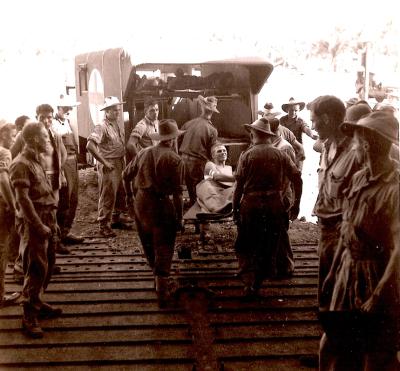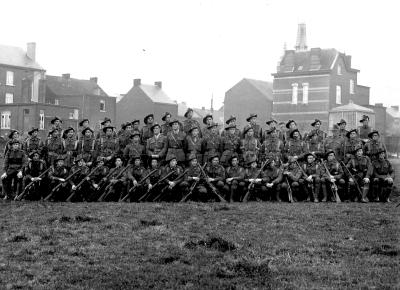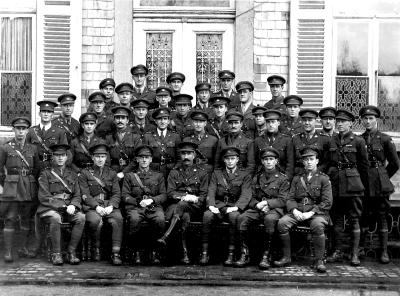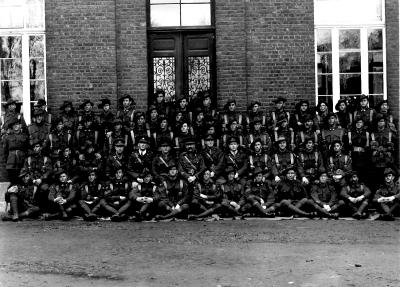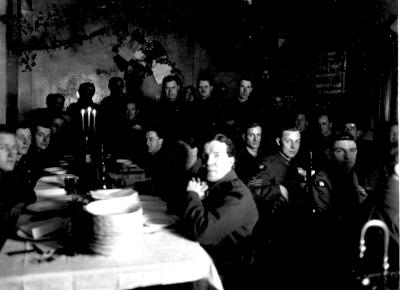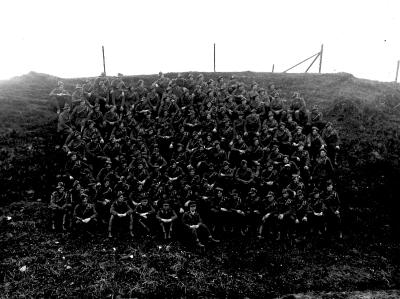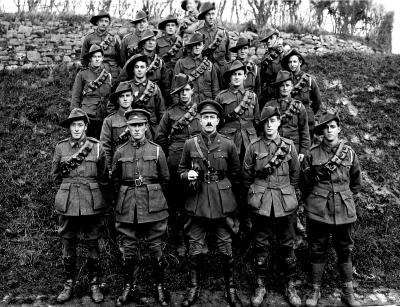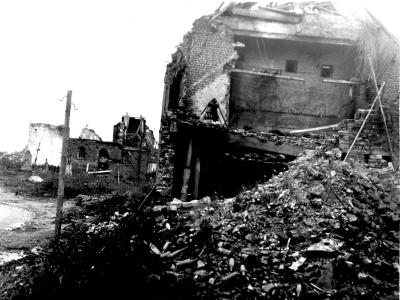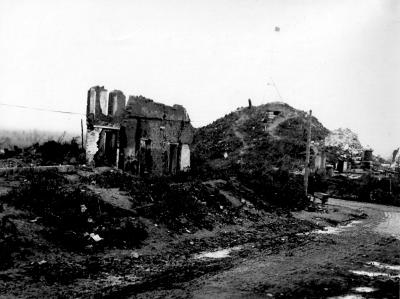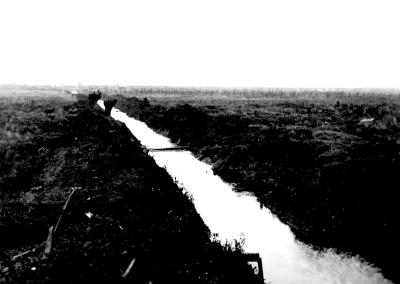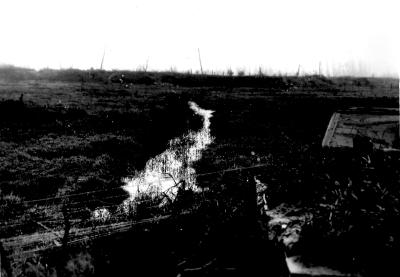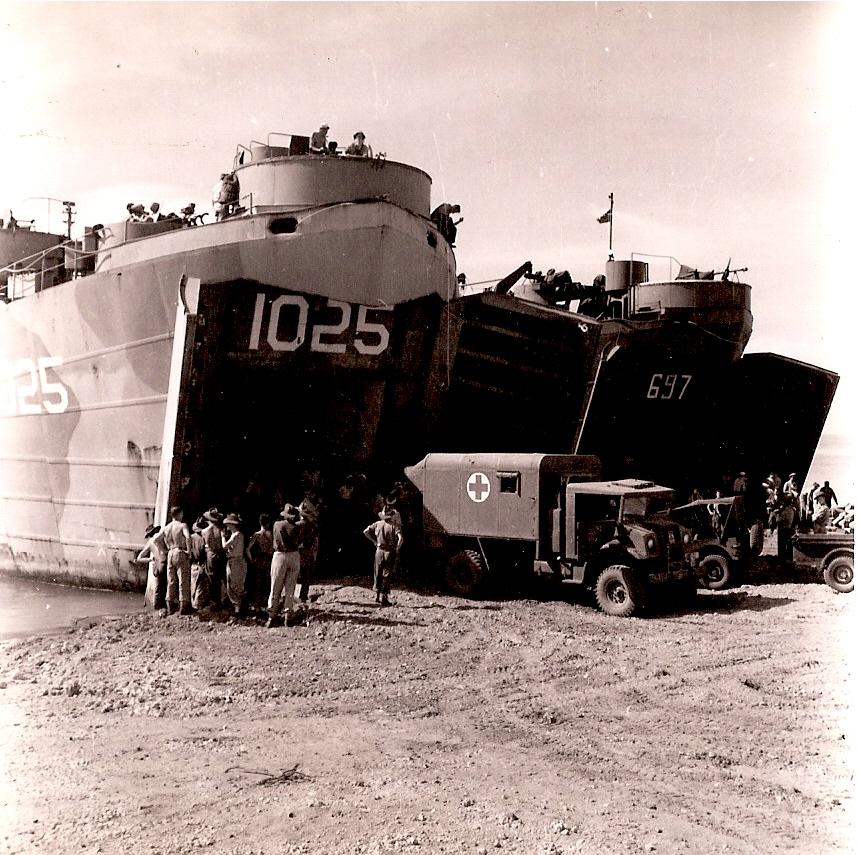World War 2,South-West Pacific Theatre, Morotai, LST 1025, LST 617, 1945
1945View of wounded evacuated from Tarakan by Landing Ship Tank (LST) being loaded into ambulances at Morotai
A landing ship, tank, (LST) is a ship first developed during World war 2 (1939–1945) to support amphibious operations by carrying tanks, vehicles, cargo, and landing troops directly onto a low-slope beach with no docks or piers. The shallow draft and bow doors and ramps enabled amphibious assaults on almost any beach.
The LST had a highly specialized design that enabled ocean crossings as well as shore groundings. The bow had a large door that could open, deploy a ramp and unload vehicles. The LST had a flat keel that allowed the ship to be beached and stay upright. The twin propellers and rudders had protection from grounding. The LSTs served across the globe during World War II, including in the Pacific War and in the European theatre.
The first tank landing ships were built to British requirements by converting existing ships; the UK and the US then collaborated upon a joint design. The British ships were used in late 1942 during the Allied invasion of Algeria, by 1943 LSTs participated in the invasion of Sicily and mainland Italy. In June 1944 they were part of the huge invasion fleet for the Normandy landings.
Over 1,000 LSTs were laid down in the United States during World War II for use by the Allies; the United Kingdom and Canada produced eighty more.
Details
Details
LST-1025 was laid down on 26 April 1944 at Quincy, Mass., by the Bethlehem Steel Co.; launched on 22 May 1944; and commissioned on 31 May 1944. During World War II, LST-1025 was assigned to the Asiatic- Pacific theater and participated in the following operations: Leyte landings-October and November 1944 Zambales-Subic Bay-January 1945 Visayan Islands landings-March 1945 Tarakan Island operation-April and May 1945 Following the war, LST-1025 performed occupation duty in the Far East until early January 1946. She returned to the United States and was decommissioned on 24 May 1946 and struck from the Navy list on 15 August that same year. On 11 June 1948, the ship was sold to the Walter W. Johnson Co. for scrapping. LST-1025 earned four battle stars for World War II service.
LST-617 was laid down on 17 February 1944 at Seneca, III., by the Chicago Bridge & Iron Co.; launched on 15 May 1944; sponsored by Mrs. E. B. Payne; and commissioned on 1 June 1944, Lt. Howard J. Benward in command.
During World War II, LST-617 was assigned to the Asiatic-Pacific theater and participated in the following operations:
Leyte landing-October 1944
Mindoro landing-December 1944
;Lingayen Gulf landing-January 1945. Assault and occupation of Okinawa Gunto-March through June 1945. Following the war, LST-617 performed occupation duty in the Far East until mid-December 1945. Upon her return to the United States, she was decommissioned on 24 May 1946 and struck from the Navy list on 3 July that same year. On 15 April 1948, the ship was sold to Kaiser Co., Inc., Vancouver, Wash., and subsequently scrapped. LST-617 earned three battle stars for World War II service.
Australian Army Museum of Western Australia
Australian Army Museum of Western Australia
More items like this
Other items from Australian Army Museum of Western Australia
- World War 1, Europe, 27 Battalion, 1918
- World War 1, Europe, 27 Battalion, 1918
- World War 1, Europe, 27 Battalion, 1918
- World War 1, Europe, Western Front, 1 Division AIF, GLASGOW, 1918
- World War 1, Europe, 1918
- World War 1, Europe, Australian Field Artillery, 1918
- World War 1, Europe, 1918
- World War 1, Europe, Australian Army Medical Corps, 1918
- World War 1, Europe, France, Fromelles, 1918
- World War 1, Europe,France, Fromelles, 1918
- World War 1, Europe, France, Fromelles, 1918
- World War 1, Europe, France, Fromelles, 1918


